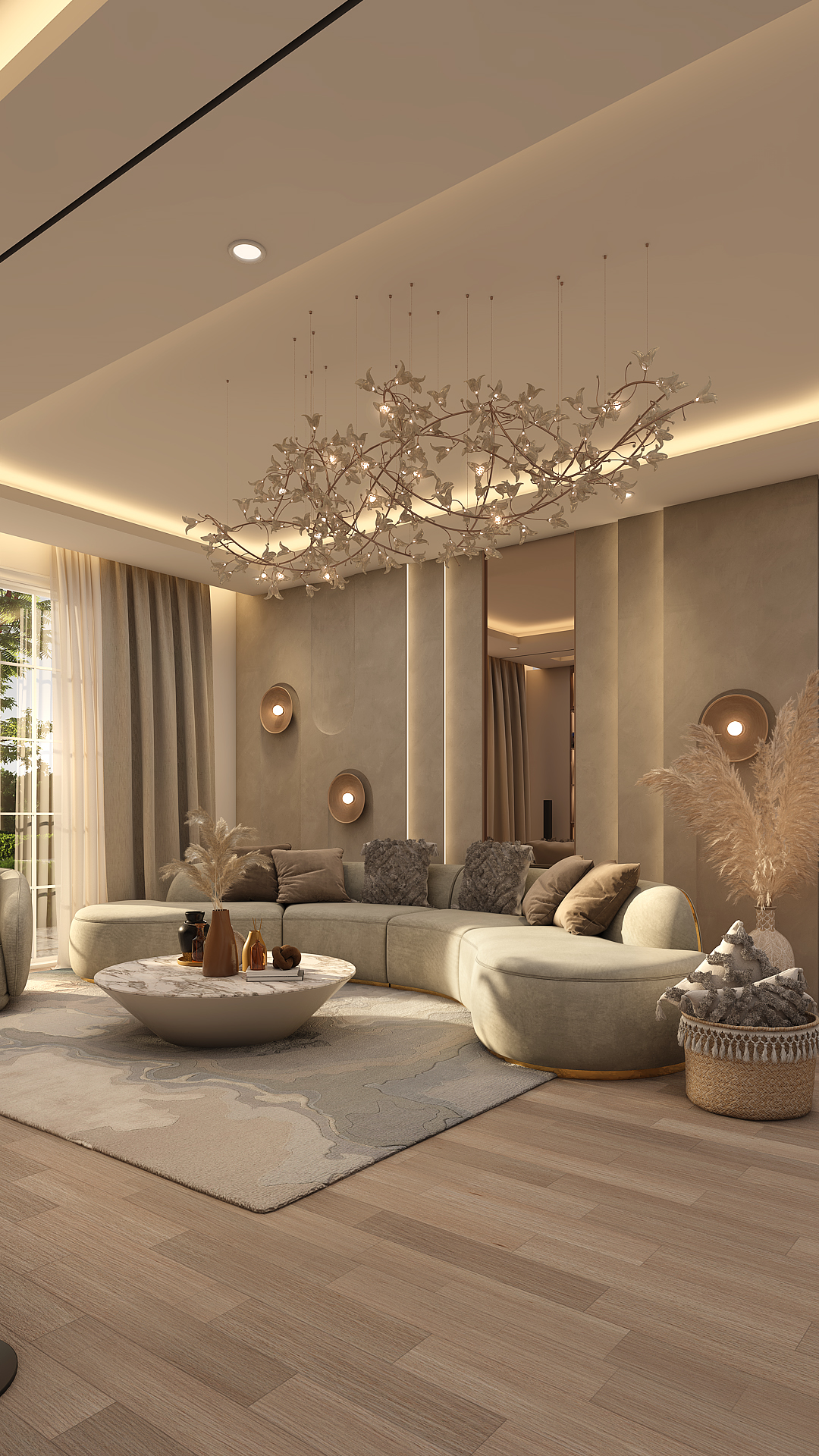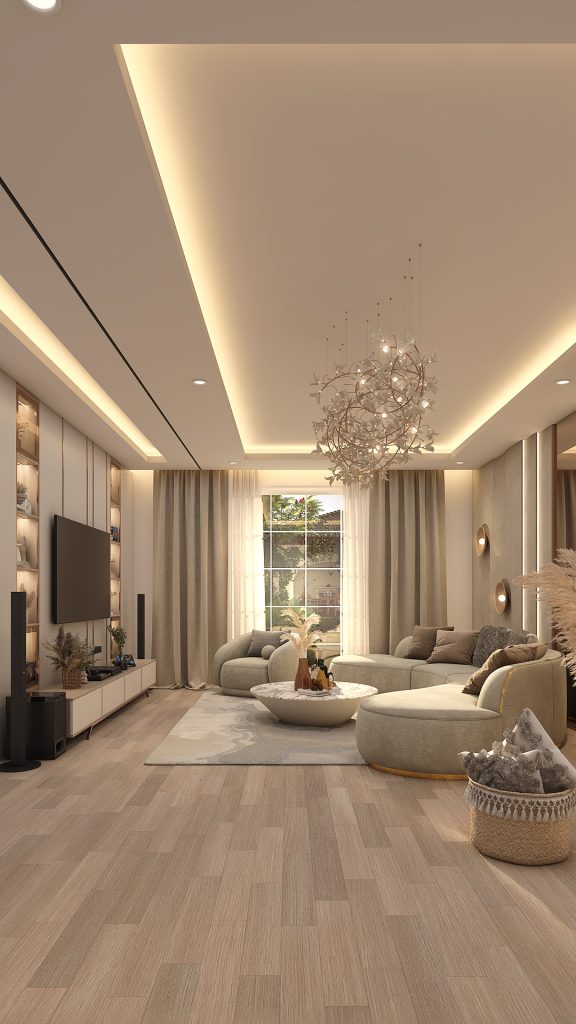Minimalist interior design has taken the world by storm, and for good reason. It’s not just a design style—it’s a lifestyle choice that promotes simplicity, functionality, and tranquility. Whether you’re living in a small apartment or a spacious home, minimalist design can transform your space into a serene and clutter-free haven.
In this blog, we’ll explore what Minimalist Interior Design is, why it’s so popular, the key elements that define it, and how you can achieve this timeless style in your own home. Plus, if you’re in Bangalore, we’ll show you how the Best Interior Designers in Bangalore can help you bring this vision to life.
What is Minimalist Interior Design Style?

Minimalist Interior Design is all about “less is more.” It focuses on simplicity, clean lines, and a neutral color palette to create spaces that are functional, uncluttered, and visually calming. Originating from the minimalist art movement of the 1960s, this design style emphasizes the use of essential elements, removing anything excessive or unnecessary. The result is a space that feels open, organized, and deeply peaceful.
Minimalism isn’t just about aesthetics—it’s a mindset. It encourages intentional living, where every item in your home serves a purpose or brings joy. This is why minimalist design is especially popular for Minimalist Interior Design for Small Houses, where space optimization is crucial.
Why do People Prefer Minimalist Interior Design?
1. Clutter-Free Living:
In a world filled with distractions, minimalist design offers a sense of order and calm. It helps reduce visual clutter, making spaces feel more open and breathable.
2. Timeless Appeal:
Unlike trends that come and go, minimalist design is timeless. Its clean and simple aesthetic never goes out of style.
3. Functional Spaces:
Minimalism prioritizes functionality, ensuring that every piece of furniture or decor serves a purpose.
4. Stress Reduction:
A minimalist home promotes mental clarity and reduces stress by creating a peaceful environment.
5. Budget-Friendly:
By focusing on fewer, high-quality items, minimalist design can be more affordable in the long run.
Key Elements of Minimalist Home Interior Design Style and How to Achieve Them

To achieve a minimalist look, it’s important to understand its core elements and how to incorporate them into your home. Here’s a breakdown of the key aspects of minimalist design and practical steps to bring them to life:
Neutral Color Palette
Minimalist spaces typically feature neutral colors like white, beige, gray, and soft pastels. These shades create a calm and cohesive atmosphere, making rooms feel larger and more inviting.
Start by painting your walls in neutral tones. Use a monochromatic or complementary color scheme for furniture and decor to maintain harmony. Add subtle pops of color through accessories like cushions or artwork, but keep it minimal.
Clean Lines and Simple Shapes
Furniture and decor in minimalist design are characterized by clean, straight lines and geometric shapes. Think sleek sofas, rectangular tables, and unadorned shelves.
Choose furniture with simple, streamlined designs. Avoid ornate or overly decorative pieces. Opt for modular furniture that can be easily rearranged to suit your needs.
Functional Furniture
Minimalist Furniture is all about practicality. Multi-functional pieces, like storage beds or foldable tables, are ideal for small spaces. Every item should serve a purpose in the Home Furniture Style while contributing to the overall aesthetic.
Invest in furniture that doubles as storage, such as ottomans with hidden compartments or beds with built-in drawers. This is especially useful for Minimalist Interior Design For Small Houses, where space is at a premium.
Open and Airy Spaces
Minimalism emphasizes open layouts and plenty of natural light. Avoid overcrowding rooms with too much furniture or decor. The goal is to create a sense of spaciousness, even in smaller homes.
Arrange furniture to maximize open floor space. Use mirrors to reflect light and make rooms feel larger. Keep windows unobstructed to let in as much natural light as possible.
Decluttered Surfaces
A key principle of minimalism is to keep surfaces clean and free of unnecessary items. This means no excessive decor, knick-knacks, or clutter. Storage solutions like hidden cabinets or floating shelves can help maintain this look.
Regularly declutter your space and only keep items that are essential or bring you joy. Use smart storage solutions to keep everyday items out of sight but easily accessible.
High-Quality Materials
Minimalist design often incorporates natural materials like wood, stone, and metal. These materials add warmth and texture without overwhelming the space.
Choose furniture and decor made from high-quality, natural materials. For example, a wooden dining table or a stone countertop can add elegance and durability to your home.
Strategic Use of Decor
While minimalism avoids excess, it doesn’t mean your home has to feel sterile. A few carefully chosen decor pieces, like a large abstract painting or a statement plant, can add personality without cluttering the space.
Select a few meaningful decor items that complement your color scheme and overall aesthetic. Avoid overcrowding walls or surfaces with too many pieces.
Why Choose Professional Help?
If you’re unsure where to start or want flawless execution, consider working with the Best Interior Designers In Bangalore. They can help you create a minimalist home that’s both functional and beautiful, tailored to your specific needs and preferences. Whether it’s selecting the perfect Minimalist Furniture or optimizing your space for a Minimalist and Modern Interior Design, professionals can make the process seamless and stress-free.
Conclusion
Minimalist Interior Design is more than just a trend—it’s a way of life that promotes simplicity, functionality, and peace. By focusing on clean lines, neutral colors, and purposeful decor, you can create a home that feels open, organized, and deeply calming. Whether you’re designing a small house or a spacious apartment, minimalist design offers endless possibilities.
Frequently Asked Questions (FAQs)
1. What is the difference between minimalist and modern interior design?
While both styles emphasize simplicity and clean lines, they are not the same. Minimalist Design focuses on reducing clutter and using only essential elements to create a calm, functional space. It often features a neutral color palette and natural materials. On the other hand, Modern Design is more about following current trends and can include bold colors, patterns, and innovative materials. Minimalism is a lifestyle choice, whereas modern design is more about aesthetics.
2. Can minimalist design work in a small house or apartment?
Absolutely! Minimalist Interior Design For Small Houses is one of the best ways to maximize space and create a sense of openness. By focusing on functional furniture, neutral colors, and decluttered surfaces, you can make even the smallest spaces feel larger and more inviting. Multi-functional furniture, like storage beds or foldable tables, is especially useful in small homes.
3. How do I make a minimalist home feel warm and inviting?
Minimalism doesn’t have to feel cold or sterile. To add warmth, incorporate natural materials like wood, stone, and linen. Use soft textures in rugs, cushions, and throws to create a cozy atmosphere. Adding a few carefully chosen decor pieces, such as a statement plant or a piece of artwork, can also make the space feel personal and inviting. The key is to strike a balance between simplicity and warmth.
4. Is minimalist design expensive to achieve?
Not necessarily. While minimalist design often emphasizes high-quality, durable materials, it can be budget-friendly in the long run. By focusing on fewer, well-made pieces, you avoid the cost of constantly replacing cheap, disposable items. Additionally, decluttering and repurposing existing furniture can help you achieve a minimalist look without spending a lot. If you’re on a tight budget, start with small changes like painting walls in neutral tones or investing in multi-functional furniture.
5. How do I maintain a minimalist home with kids or a busy lifestyle?
Maintaining a minimalist home with kids or a busy lifestyle can be challenging but not impossible. The key is to create smart storage solutions that keep clutter out of sight. Use baskets, bins, and hidden cabinets to organize toys, books, and everyday items. Encourage family members to adopt a “one in, one out” rule—when a new item comes in, an old one goes out. Regularly declutter and involve your family in the process to make it a shared responsibility. Minimalism is about intentional living, so focus on what works for your lifestyle rather than striving for perfection.
If you’re in Bangalore and need expert guidance, reach out to the Best Interior Designers In Bangalore to bring your minimalist vision to life. Ready to embrace the beauty of less? Start your minimalist journey today!

